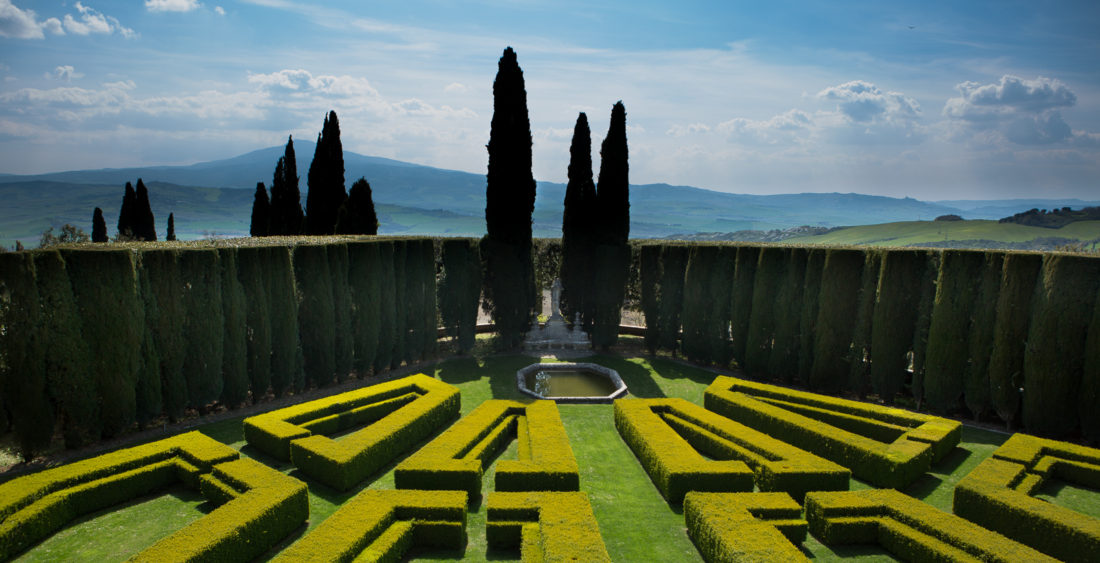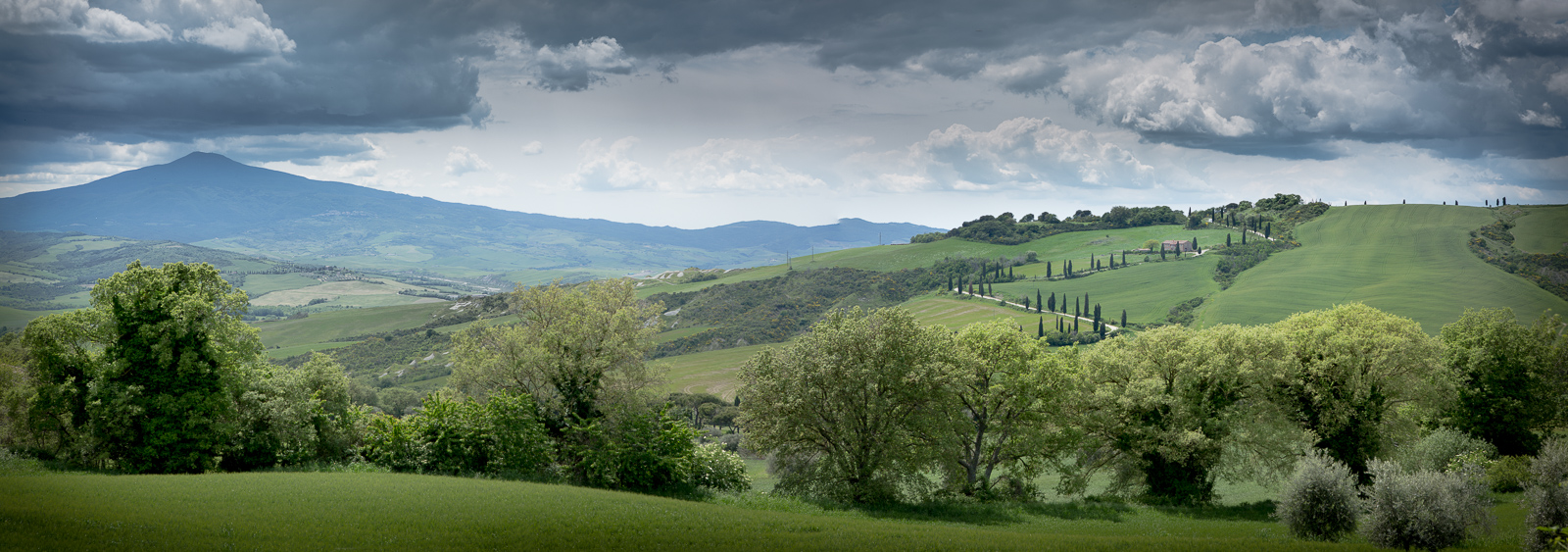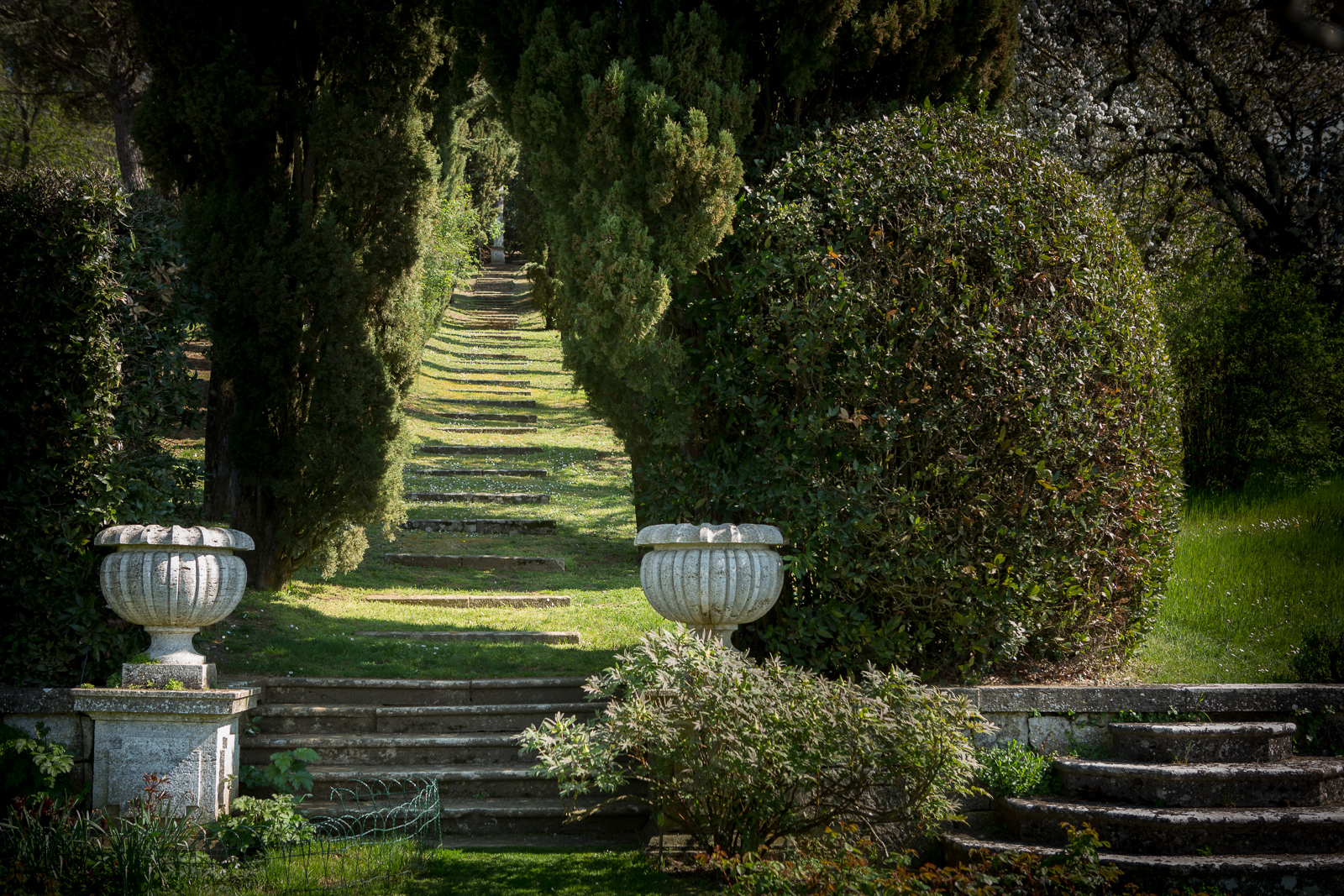
Cunning, danger, and beauty: La Foce
Every once in awhile there’s a person, place, point in history, or an aesthetic creation that stops you in your tracks. Something that causes you to think “Could I have ever done that?” And even more rarely, “Could I have ever been that brave?” La Foce, and Iris Origo, provide that spark for me.
The first layer of the experience is the garden, one of the most magnificent in Italy. The Val d’Orcia, south of Siena, and more specifically Pienza and Montepulciano, is one of the most arid and rugged parts of Italy, described by Iris as “bare and colourless as elephants’ backs, as treeless as mountains of the moon. A lunar landscape pale and inhuman… a land without mercy and without shade.”
Iris and Antonio Origo purchased an old, crumbling villa with no running water or electricity, surrounded by this barren land, and over fifty years, starting in 1924, created one of the most iconic gardens in Italy. This curved road, flanked by cypresses, is often on the cover of guide books and was created by them from the barren land.

Iris was half American and half British and very wealthy. Her father died of tuberculosis when she was young. Her father’s family had never accepted his marriage to an Englishwoman and his dying wishes were that she grow up “free from all this national feeling which makes people so unhappy.” He suggested Italy, where she could become “cosmopolitan, deep down” and “free to love and marry anyone she likes, of any country, without its being difficult.” Her mother raised her in Florence, in the Villa Medici in the hills outside the city, where frequent guests included Bernard Berenson (her mom used to play a “guess what painting that detail is from” with him), and Edith Wharton. There she met and married Antonio Origo, the illegitimate son of an Italian aristocrat.
The couple decided to experiment with the latest in agricultural and social ideas with their new property, La Foce, restoring the main buildings, and the tenant farmers’ quarters, creating schools and healthcare facilities, a social club for workers, and undertaking massive work restoring the land to arability. Iris took the lead on the workers and families, who when they bought La Foce, lived in dismal tenant-farmer conditions and were 90% illiterate. Antonio focused on making the farm productive. The land had been deforested by the Etruscans, who had cut down all trees and overgrazed the grasses resulting in the loss of almost all the topsoil. For the next 2,000 years the land remained barren, making the planting of crops, and even the movement of people on foot between nearby villages impossible due to the heavy, wet clay.

(photo thanks to La Foce)
The before and after is clear in the landscape below—previous to their work most land in the Val d’Orcia looked like the lunar landscape to the right in the photo. The rolling green hills, curved road, and rows of trees were all created by them.

They brought in the British landscape designer, Cecil Pinsent, to work with them on creating the formal gardens. He worked on La Foce on and off for the next 30 years. It is said that the garden gets progressively more subtle and sophisticated as his Italian, and hence the ability to communicate with his worked, improved.

All this is fairly interesting to me, and lovely to visit, but the part that captures my imagination lies with World War II and the fact that Iris was a genius at observation, a very talented writer, and a bold and brave woman caught between her adopted Italian homeland and her British and American roots.
Before the war, and during it, she kept diaries which she kept hidden in different places on the property. If the diaries had been discovered by the Germans during the war it would have meant certain death for her, and possibly for her family. She was very well-connected in Italy, England, and America (her godfather, William Phillips, was the American Ambassador to Italy) so her comments are often deeply behind the scenes but she’s equally adept at capturing what a range of Italians from illiterate workers to the middle-class in Florence to the aristocracy were thinking and feeling during this period.
The Nazis decided to house American and English POWs at La Foce and Iris had to walk a careful line as she needed to appear to side with the Germans or their ability to help hundreds of people behind the scenes, and their work on La Foce, would be lost. At night she was taking food and information to the partisans who were camped in the woods around the house, and to the POWs whom she could not interact with during the day. They were housing orphans and evacuees from the bombings in Turin when the Germans seized La Foce in 1944. The Origos led 60 people to safety (among them many children and babies) by walking to Montepulciano, including through mined fields.
And at night she wrote. Crisp and vivid of detail, while also capturing the big picture of the war, it is almost impossible to believe that she could create such a body of work under such conditions. Her most famous work is War in the Val d’Orcia: An Italian War Diary 1943-44. Very recently published is an earlier diary, A Chill in the Air: An Italian War Diary 1939-1940 which seems, unfortunately, to be relevant today. Iris writes in April 1939, “It is now clear what form propaganda, in case of war, will take. The whole problem will be presented as an economic one. The ‘democratic’ countries, i.e. the ‘haves’, will be presented as permanently blocking the way of the ‘have-nots’ to economic expansion… Fascists are thus enabled to see the impending war as a struggle between the poor man and the rich—a genuine revolutionary movement.”
To immerse yourself in all-things-Iris, it is possible to visit the garden on a guided tour several afternoons a week. The Origo’s daughters, Benedetta and Donata, now have the property and have converted some of the outbuildings into places to stay. The social club they built for the workers, called the Dopolavoro (literally “after work”) is now a restaurant that serves simple but lovely food and wine with a nice outside area to eat on hot days. My hint would be to do the last tour in the early evening, followed by dinner. Pinsent designed the gardens so that the shadows would move like dancers.






No Comments